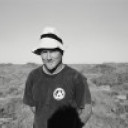Moons and Tides


I've heard plenty of stories over the years how the full moon seems to coincide with the biggest and best swells of the Indo season, but I can't think of any justifiable reason why.
But yes, the tidal movements are biggest around the full and new moon - and this larger tidal range would certainly assist in giving smaller swells a minor kick in size. So I suppose it's a mild safety clause - if you manage to choose a period with very small swells, then at least there'll be a tidal kick every day to compensate.


The other side to that is with the big tides a small swell can dissapear on the dropping tide and on a big swell there can be alot of water moving.


There's no doubt the tidal currents pulling through the very deep channels between islands (esp the Lombok strait) has a massive effect on Indo swells.
Probably a result of the effect of these deep channels, strong currents and long period swells running deep in the water column.
Desert Point and Shipwrecks are exhibit A for the effects of tidal current/range on surf sizes.
You also need to consider the Indonesian throughflow which is the main thoroughfare for exchange of Pacific and Indian Ocean currents.


This has a lot of relevant info.
Esp. the part about ocean internal waves in the Lombok Strait.
http://www.tos.org/oceanography/issues/issue_archive/18_4.html


But Steve - Richo's going to the Mentawais. I'm not aware of any major throughflow in that neck of the woods?


True.....but this statement still applies: "Tidal phenomena in the Indonesian
seas are among the most complex in the
world. Complicated coastal geometries
with narrow straits and myriad small islands,
rugged bottom topography next to
wide shelves of shallow water, and large
quantities of tidal power input from the
adjoining Indian and Pacifi c Oceans—all
combine to form a complex system of
interfering three-dimensional waves."
The surfing in the Kampar Bono tidal bore in Sumatra was a pretty good example of the tidal power in that region.


Surfline came to a very similar conclusion when they did their historical assessment of Chopes swell's and found that larger swells statistically coincided with a full moon for Chopes. I questioned this even more so as they weren't comparing wave/surf heights at the beach but actual deep water open ocean swell heights from their archive data. Full moons/tides would not influence these so I questioned the validity of their statement, but they stuck by the data assessment results.
But I do agree with Steve that after seeing Desert's first hand, the tides up there certainly have a major impact on wave heights hitting the reefs.
Can't speak for Indo (Ments) personally, but every seasoned Ments traveller I've spoken with has said the same advice. Plan your trip around a full or new moon.
My next question is, does Ments have king tides like our Spring tides here on the east coast? And if so, surely one would run for these given the more water/current theory Steve's postulating.


As swells are generated by pressure differentials located a wide variety of distances away from the coast, I really can't see how there can be a relationship between lunar phases and wave heights.
That is, unless there is merit in Ken Ring's work (which was debunked some time ago by the fine folk at Weatherzone).
What was Surfline's statistical conclusion, Don? I'm curious on the figures.


As swells are generated by pressure differentials located a wide variety of distances away from the coast, I really can't see how there can be a relationship between lunar phases and wave heights.
By: "thermalben"
This was exactly my hypothesis back to them, but they didn't answer it. I too couldn't see how the moon could influence open ocean swell heights, given the multitude of storms and swell generating systems many moons away along the great circle paths.
I'll see if I can dig up the article on the archives Ben.


Here's Part 1
http://www.surfline.com/forecast/12-year-analysis-of-teahupoos-april-and...
And here's Part 2, where they talk about the moon phases:
http://www.surfline.com/forecast/teahupoo-tahiti-historical-wave-analysi...
Their results state the following:
Tahiti receives most swell activity:
1. Over the New Moon Period
2. Between 1st Qtr and Full Moon
3. Between Full Moon and 3rd Qtr
Slack periods with less swell seem to be:
1. Going into 1st Qtr
2. Just after 3rd Qtr


I think it's more related to the near-shore effects of these 3 dimensional tidal waves.
but whether the gravitational pull of the moon is influencing large scale pressure differences in the atmosphere is something that could do with some investigating.


but whether the gravitational pull of the moon is influencing large scale pressure differences in the atmosphere is something that could do with some investigating.
By: "freeride76"
But even if that was the case Steve, the massive swell windows and length of great circle paths for Indo and Tahiti would just make the arrival times of those swells near impossible to coincide every time with the full moon.


Well we're are talking about probability here Don.
I'm not sure the sample size from the Surfline Tahiti generalisations is large enough to make any kind of call.
Have to look at it.


12 years is nowhere near long enough time to create a historical data set. Climate studies need at least 30 years.
Also they focus more on the last 5 years, stating that the if this 5 years is included in the 13 year data it skews results :o
Um, you can't just focus on a time period because it doesn't fit your intended outcome. I may have misinterpreted this a little as I skimmed over it, but using a 12year period as a historical data set is way too short.


I agree it would be better to capture a greater period of archive data, but unless you have a photographic memory like Steve, 1997 is as far back as the swell model archive data goes.
I still find it extremely difficult to correlate open ocean swell heights with moon phases.
I would have liked to have seen the data plotted against La Nina/El Nino years myself, as it's a fairly well known fact that the North Pacific is the place to be in El Nino years, so one would like to see how the South Pacific fairs in these stats also.


You can go back as far as you want Don if you run the model yourself.
I haven't read the moon phase section yet, but as has been stated above, there's no way to correlate it especially when swells are created 3-5 days before.


You can go back as far as you want Don if you run the model yourself.
By: "craig"
?? I don't understand this comment Craig?
I haven't read the moon phase section yet, but as has been stated above, there's no way to correlate it especially when swells are created 3-5 days before.
By: "craig"
And that was my point exactly above in discussion with Ben...sometimes even longer 5-7 days+.


If you are running WW3 all you need to do is ingest GFS data to run a hindcast. This data goes back further than 1997.


Oh I see. Perhaps you should suggest that to Surfline then!!!


So, basically; we have a very real tidal phenomena in Indonesia (and Nor-west WA) that seems to directly influence near-shore wave heights by complex and poorly understood(though well known anecdotally) mechanisms involving 3 dimensional waves........
And a complete furphy of an argument involving tahiti (which has a very small tidal range) and the, as far as I know, unsupported argument that moon phases could somehow influence storm production in the Roaring forties.


Yep, you nailed it Steve!!
BTW - How come Ben did the SE Qld forecast yesterday (if ya don't mind me asking).


Steve's taking the week off, Don. He'll be back on deck next Monday.
Re: historical data - I suspect Surfline may be using the data made publicly available via NOAA, rather than generating hindcast GFS data themselves and ingesting it into WW3 to create a longer historical time series. Magic Seaweed have the similar data of approximately the same duration (~12 years), which is probably from the same source too.


Yep, NCEP's Environmental Modelling Centre provide archive WW3 data starting 1997, but it looks like the latest release only goes back to 1999 now.


Craig, link please!! :)




So.. back to Richo's question - in general, you won't find much difference between the full moon or new moon tide in this neck of the woods. A quick Google search brought up a website that claims that the tidal range across the Mentawais is not particularly large (4ft or so) compared to other parts of Indonesia.
As for whether you should book your trip around the phase of the moon - without any stats to back me up, gut feel tells me your swell prospects will be the same no matter what time of the month you book. However, booking a trip around the full or new moons will slightly assist your daily surf prospects in the event you score a week of tiny waves.


Through personal experience through Indo and on the GBR and other reef setups down the coast, I find that the tide has little effect on SWELL in these areas. But tide, and particularly spring tides, most definately has effect and influence on the height of the wave hitting those reefs.
This is purely through obseration and experience at these places.


Southy as far as vicco goes you are pretty much onto it, you would be surprised how many surfers in this state have no idea what is going on in regard to how tide affects the swell on the reefs around here, I reckon 70% of vicco surfers have limited knowledge. Keep it under your hat southy,no need to give the masses on the internet a basic guide to swell and tide when they weren't even looking for it. Cause you will be spewin when that same carload of guys keeps on turning up at the right time at your favorite reef break.


Thanks Southey that's some awesome info regarding MP etc. You know your stuff mate! Cheers and well written.


There is no evidence to prove that during full moons extra low pressure systems are formed or are more intense than at other times of the year.In fact I can remember many a time when it's been dead flat during a full moon.If there is a decent swell running during a full moon the incoming tide will amplify the swell for some locations.


Every particular location has it's local effects from the sinusoidal tidal waves that move through amphridomic systems.
In my area these relate to water depth on offshore bombies and it's effect on the period signature of certain swells (particularly long period souths undergoing heavy refraction), offshore canyons carved in the continental shelf by river systems(and their subsequent focusing effect), and the obvious effect on near-shore bathymetry of local sandbars at various water depths.
Anyone who decries the easy information made available by surf forecasting sites misses the obvious point that so much vital information is still hoarded and understood by very few who put the time into understanding local tidal effects.


..."Every particular location has it's local effects from the sinusoidal tidal waves that move through amphridomic systems"....
Yeah, I was going to say that.
Tides and ocean movements between Australia and Indo - a tiny strait separating the two great oceans - riddled with interlocking islands far too complex to model or even measure real time, and in spite of all the incredibly learned comments here, I defy anyone to suggest that they can have the slightest clue about it on the macro scale.
Having said that, on the micro scale, if the long term observations indicate that it is happening at a particular beach or point, then I would be inclined to go with that. The proviso being that this is so complex that it might not apply to the beach just around the next headland - so possibly totally local. I reject the idea that the entire Mentawais is affected the same way as laughable conjecture.
Then I would factor in Craig's comment about 30 year studies being necessary to apply any real empiricism to it, and the fact that nobody has kept written records over a 30 year period for any particular break, and the fact that we are then relying on human memory which may be as faulty as any recall mechanism known to man or beast, and at best provides only anecdotal evidence.
And we haven't even started on the absolute, but unquantified, certainty that full moons affect mood, behaviour, sleep patterns and consequently a memory system that was already highly questionable.
At the end of the day, I'm suggesting that if there is an old bloke with a beard and a straw hat at the end of the pier muttering something under his breath about 'that's just the lemon next to the pie', then maybe you can assume it is going to get bigger.
But otherwise I am calling hoax.
As for Southy's observations in the Tasman, completely different kettle of fish but still extraordinarily complex. I'd go with what the intelligent locals are suggesting, while dismissing the BS artists. Southy and Shaun are probably on to something, and they aren't telling.
Now - how to differentiate between the intelligent and the BS artists. hhhmmmmmmmm.

I'm planning a trip to Mentawais and was told to go either on full moon or new moon. Can you tell me which is best and why. Are there bigger tidal movements on one or the other. I would assume they were the same because a new moon is a full moon too isn't it? Any info would be greatly appreciated.
Thanks